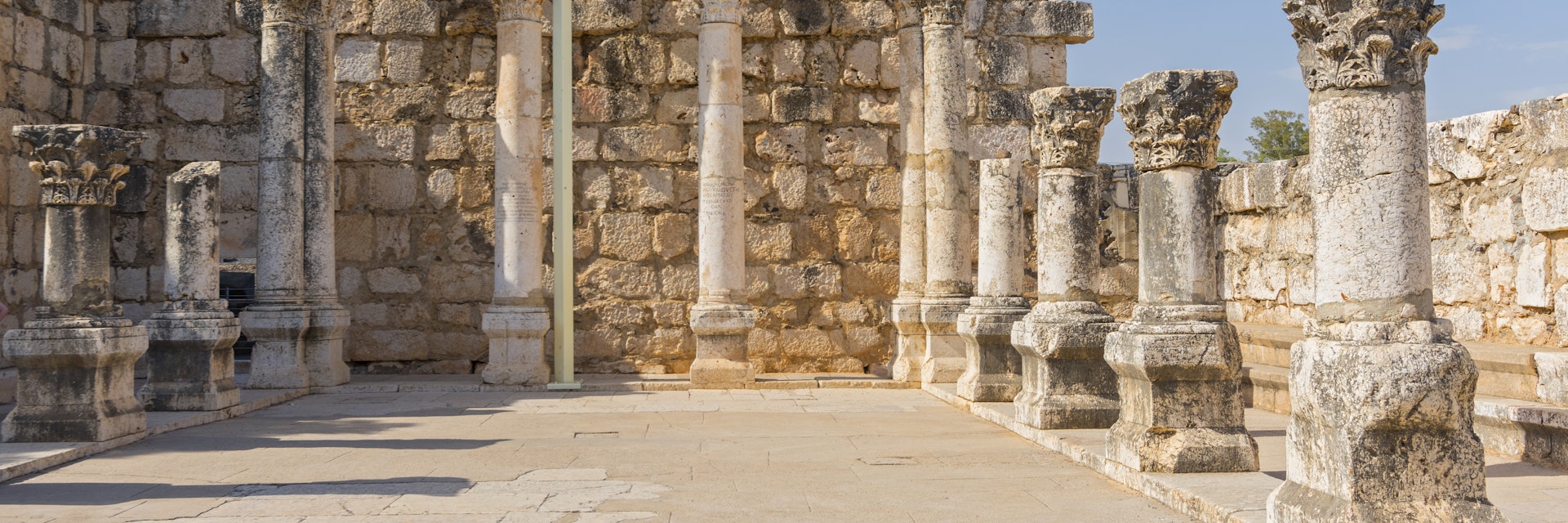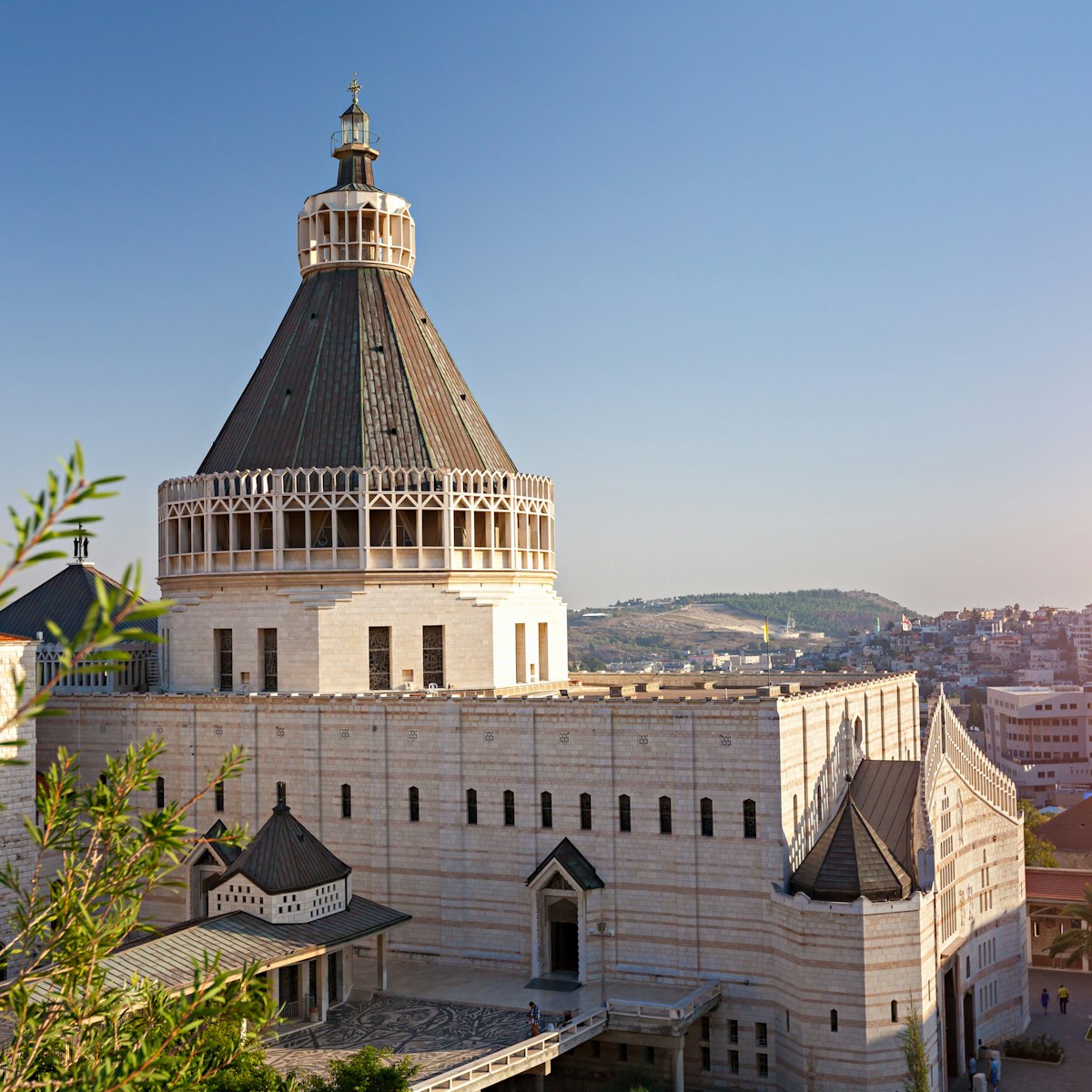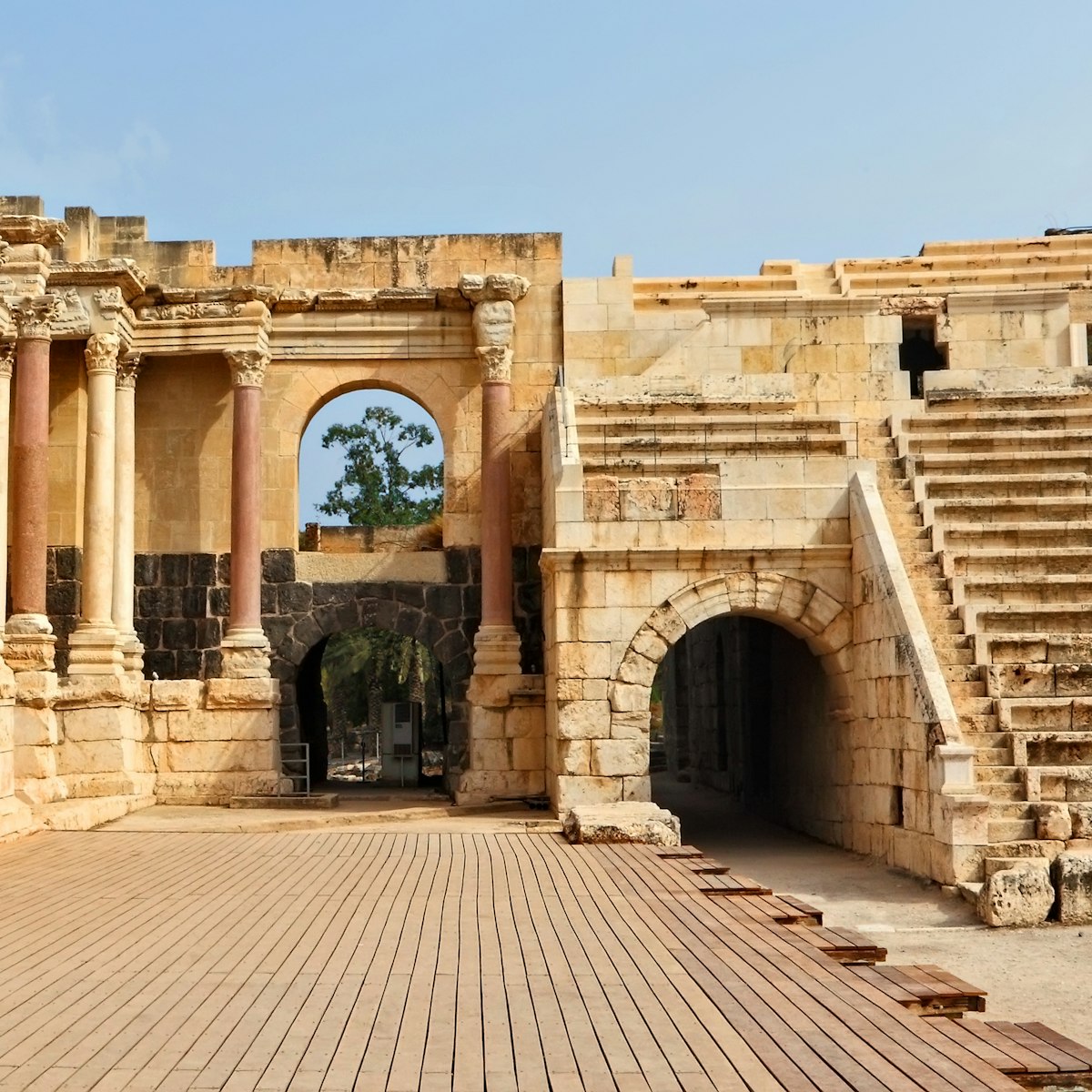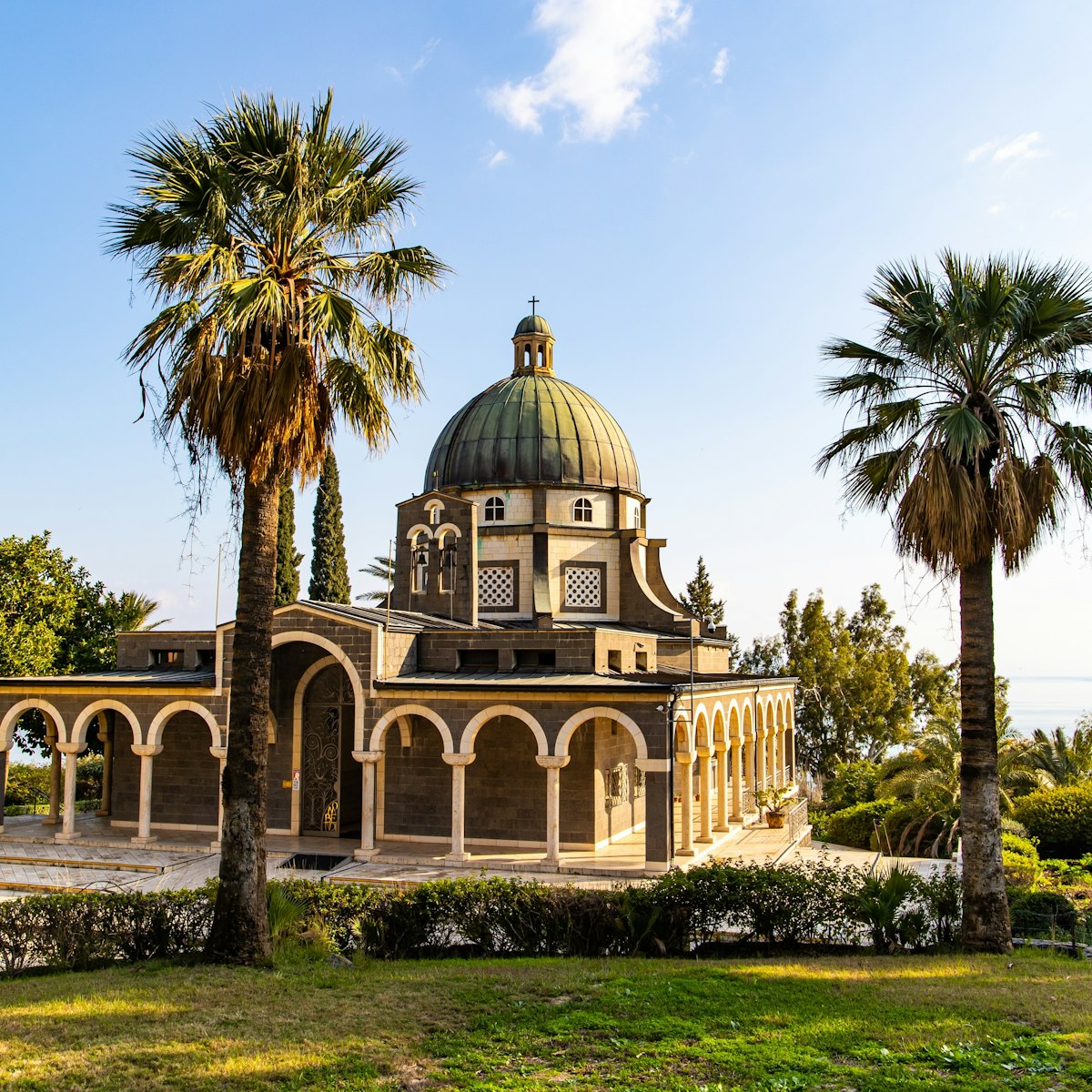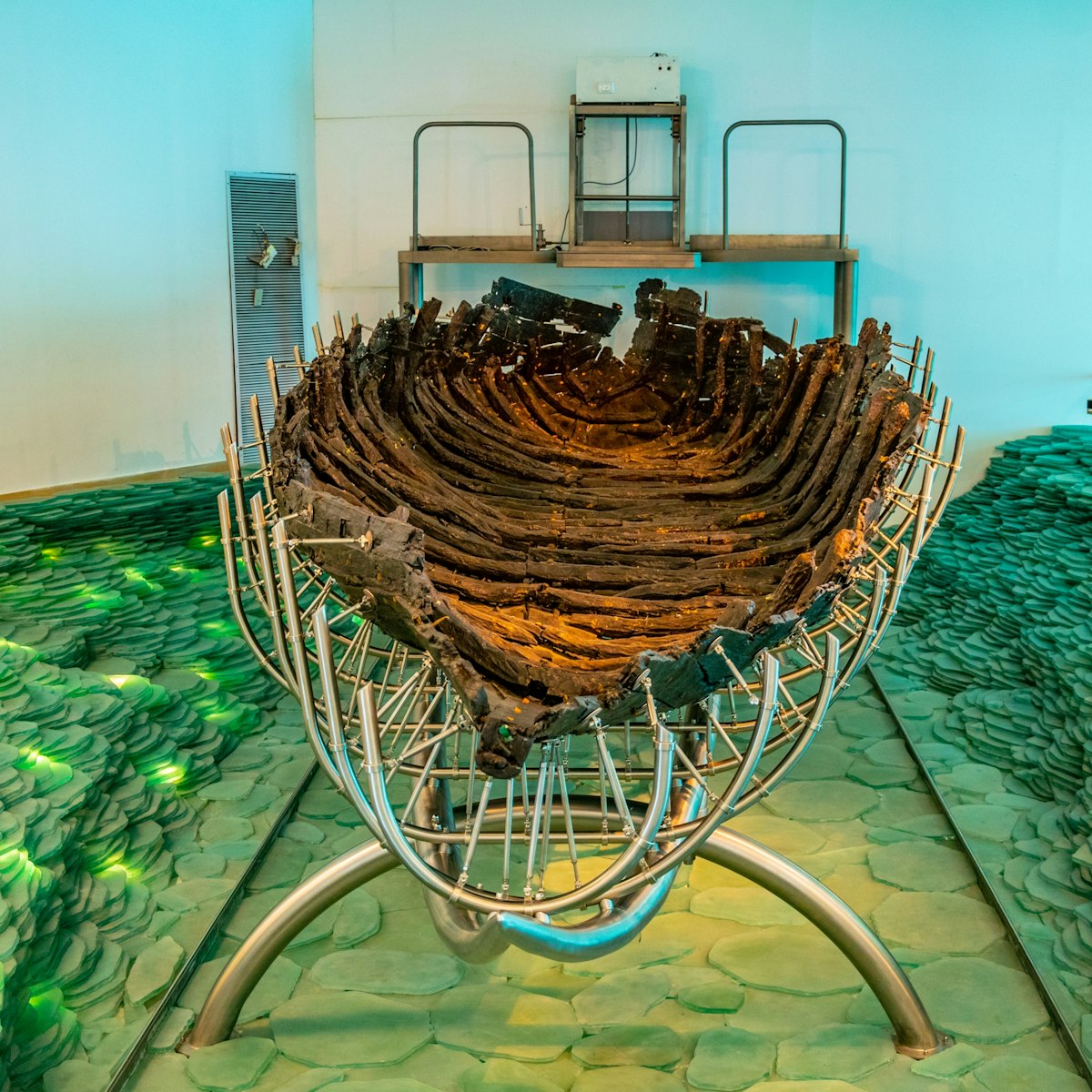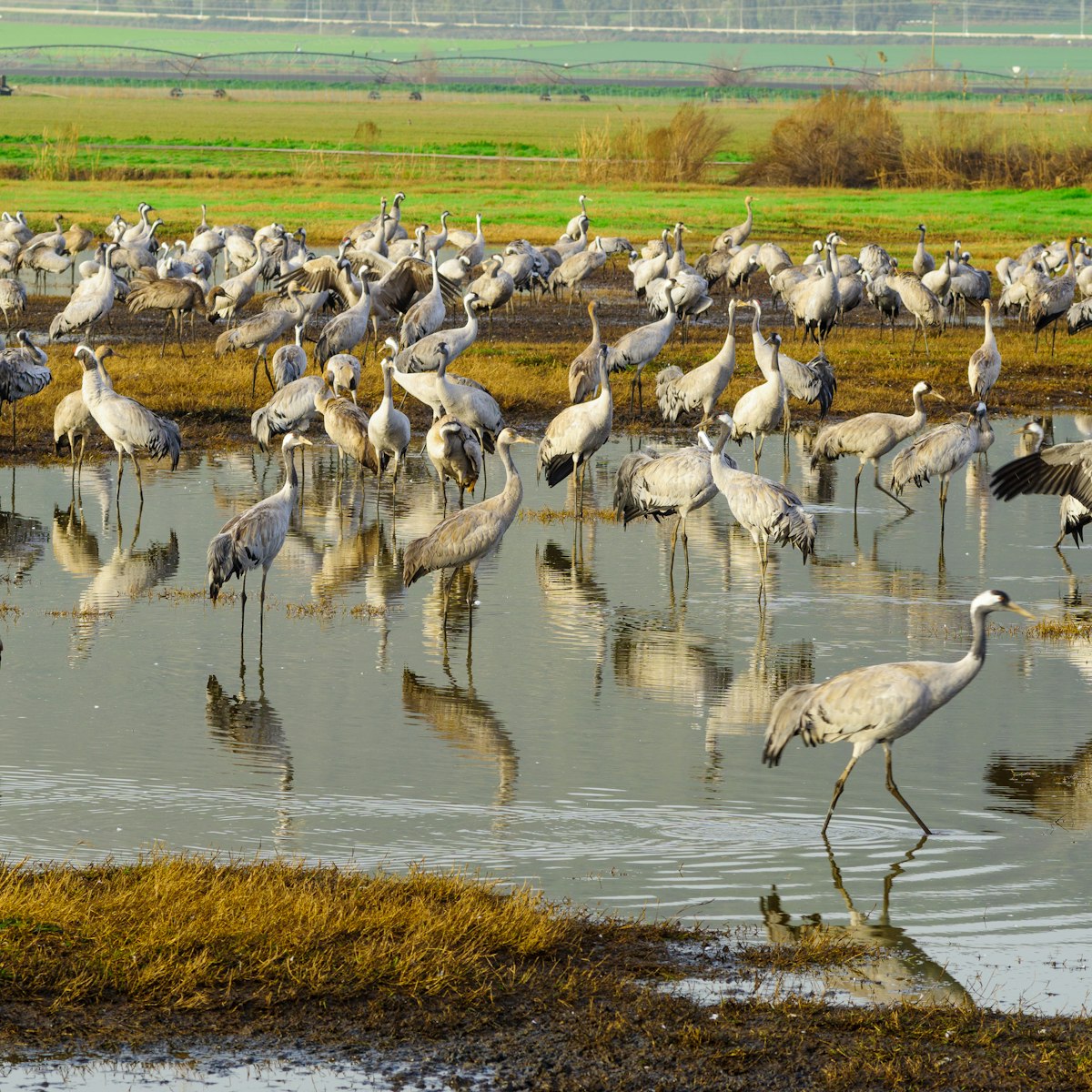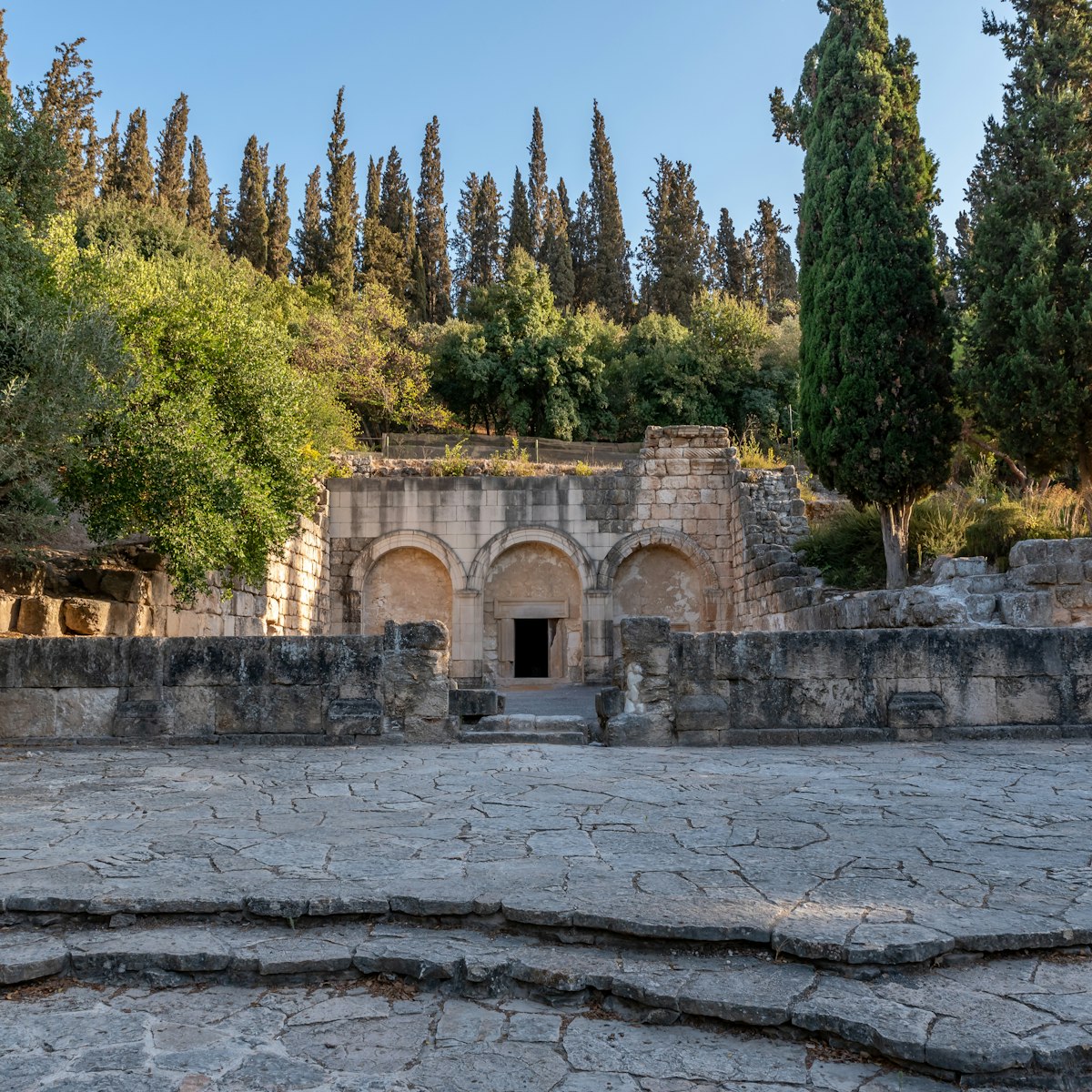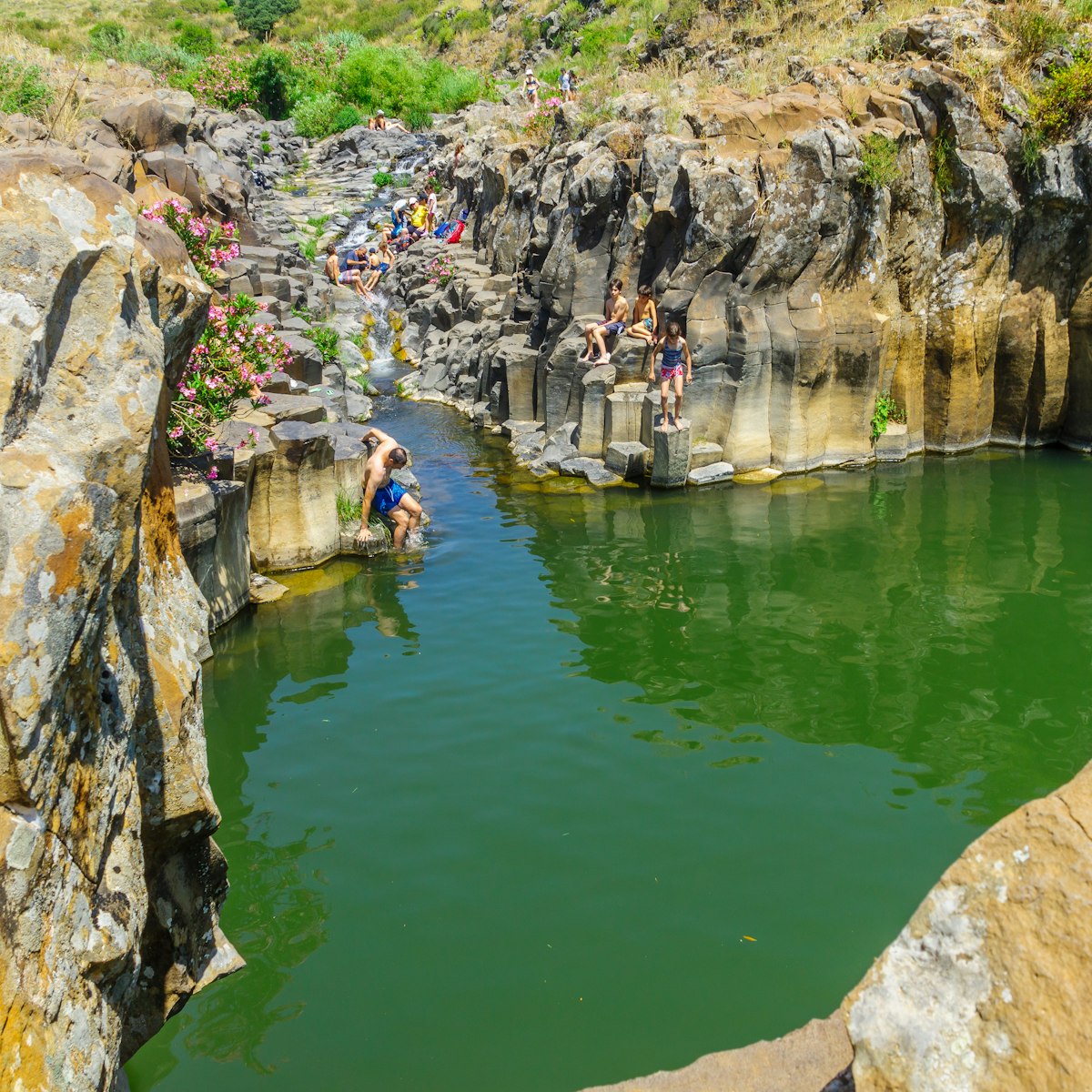The New Testament says that the prosperous lakeside village of Capernaum (estimated population 1500), on the imperial highway from Tiberias to Damascus, was Jesus’s base during the most influential period of his Galilean ministry (Matthew 4:13, Mark 2:1, John 6:59). It is mentioned by name 16 times: this is where Jesus is believed to have preached at the synagogue (Mark 1:21), healed the sick and recruited his first disciples, fishers Peter, Andrew, James and John and Matthew the tax collector.
The Franciscan friars who run the site, dressed in brown cassocks with a white rope around the waist, are happy to answer questions. An explanatory sheet (1NIS) is available at the ticket window.
Capernaum’s renowned synagogue, whose facade faces south towards Jerusalem, consists of two superimposed structures. The reconstructed building that can be seen today, known as the ‘White Synagogue’ because it’s made of light-coloured limestone, was built in the late 4th century atop the dark basalt foundations of the ‘Synagogue of Jesus’, which – despite its name – appears to have been built at least a century after the Crucifixion.
On the other side of the tree-shaded benches from the synagogue, 10m to the right of the olive press, a menorah decorates the upper lip of a column. A nearby column bears a 5th-century inscription in Hebrew commemorating a donation made by someone named Alpheus, son of Zebidah.
A modern, glass-walled church (1991; now air-conditioned), used for frequent Masses in dozens of languages (ask the officiating priest if you'd like to join), is dramatically suspended over the ruins of an octagonal, 5th-century church that partly obscures St Peter’s House, where Jesus is believed to have stayed.
Near the entrance to the site, there's a row of impressive stone lintels decorated with fruit and plant motifs but, in accordance with the Third Commandment (Exodus 20:4), no images of people or animals.
Capernaum is 16km northeast of Tiberias and 3km northeast of Tabgha. Hwy 87 has three signs indicating turn-offs to Capernaum – to get to the archaeological site, take the westernmost of the three.
